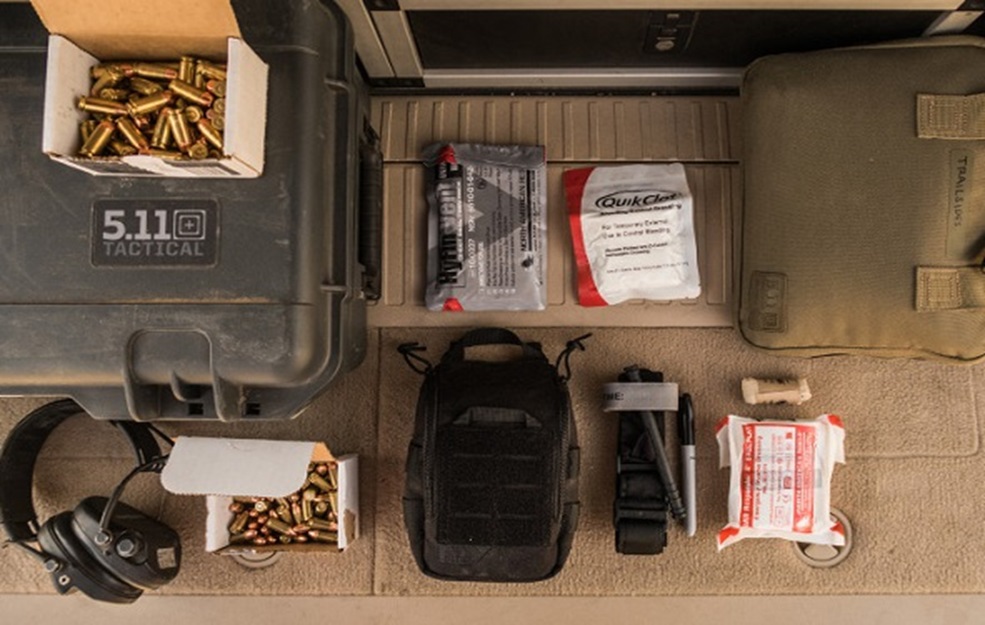Having a properly packed Individual First Aid Kit (IFAK) can save your life or someone else’s, so it’s crucial to know what to include and where to place it on your gear. If you’re in law enforcement, the military, or another first-responder role, your unit or organization probably has a Standard Operating Procedure (SOP) that specifies what you need in your IFAK and where to place it. If you’re setting it up for personal use, you’ll need to use your best judgment.
Choosing the Right Individual First Aid Kit
Outside your organization’s SOP, you can select an IFAK that best fits your needs. First, choose IFAK kits that can hold all the necessary supplies. Here’s a list of essential items for a basic IFAK:
- Burn dressing
- Combat (hemostatic) gauze
- Gloves
- Ibuprofen
- Israeli dressings
- Pen light
- Permanent marker
- Pressure dressing
- Tourniquet
- Trauma shears
- Vented chest seal
This supply list covers the bare minimum, and typically, it’ll all fit into a standard 3 x 6 Med Kit. Here are extra items you should include if your IFAK is larger, like a 6 x 6 Med Pouch or a full Med Pouch Gear Kit:
- Control wrap
- Duct tape
- Extra gauze
- Nasal pharyngeal airway
- Pneumothorax kit (only if trained to use it)
- Splinting material
- Trauma tape
For those packing a range bag or survival bag, investing in a UCR IFAK Pouch Med Kit is wise. This kit includes a tourniquet, nitrile gloves, a Sharpie, emergency trauma dressing, a pair of vented chest seals, and QuikClot® dressing. You can customize it by adding other necessary items or complement your existing med pouch. The UCR IFAK Pouch has ample space for personalization and can be expanded with the Double Deploy Gear Set.
Where to Place Your IFAK
Your unit or organization’s SOP will dictate the placement of your IFAK on your gear—usually over your kidney or just above your waist on your dominant side. If you have the freedom to choose, consider how you’ll react in an emergency. If you’re wearing a plate carrier, fit it between holsters, mag pouches, and other attachments. Here are some key points to remember:
- Personal Use: Your IFAK is for treating yourself. If someone else is injured, use their IFAK. This is similar to the military rule on tourniquets: Never use your own tourniquet on someone else.
- Accessibility: Place your IFAK where you can reach it with either hand in case your dominant hand is injured.
- Ease of Use: Ensure your IFAK doesn’t obstruct drawing your firearm. For example, if you use a drop-leg holster, practice to ensure the first-aid kit doesn’t get in the way.
- Quick Access: Your IFAK should be easy for you or someone else to access. This ensures you can handle most emergency medical situations until professional help arrives.
By following these guidelines, you can ensure that your IFAK is well-prepared and appropriately placed, making it a vital tool in emergency situations.






